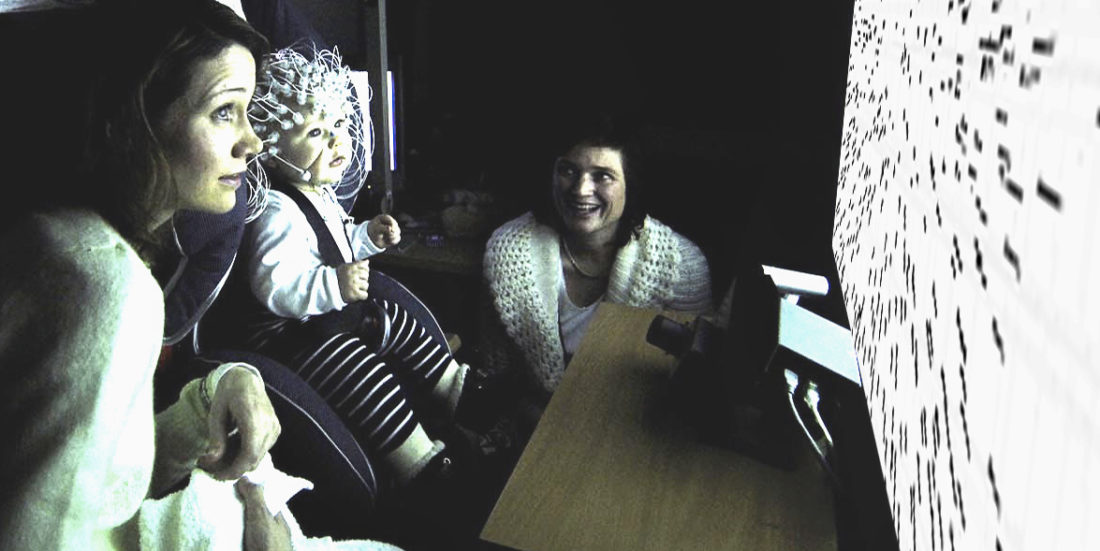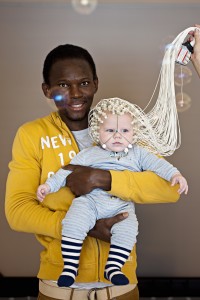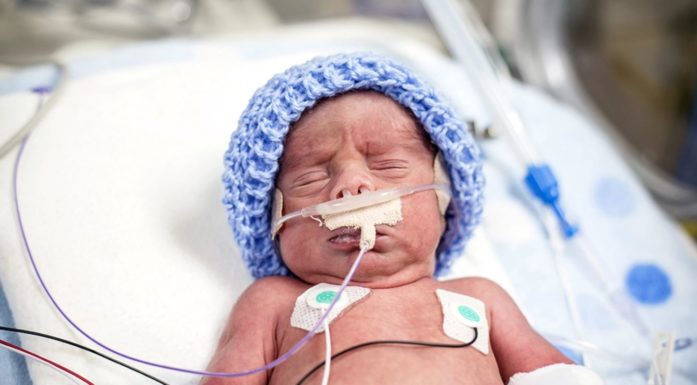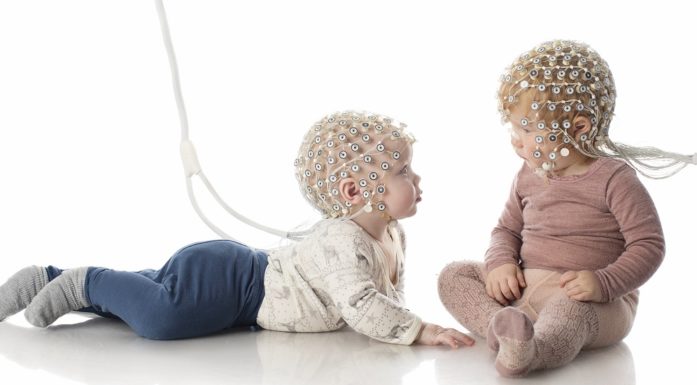Cracking the code in an infant’s brain
What happens in the brain of an infant during its first year of life? Are premature babies able to keep up with normal development targets?
Babies gradually become better at perceiving and interpreting visual stimulus throughout their first year of life. This knowledge can help scientist figure out what happens to brain development in infants who are born prematurely.
Babies have less hair on their head and thinner skulls than adults, which makes them perfect for tests at the Developmental Neuroscience Laboratory at NTNU, where researchers are trying to understand the underlying processes that control neurological development by studying infants.
The tests are performed using electroencephalography (EEG), which is a recording system that uses voltage fluctuations along the scalp to record the brain’s spontaneous electrical activity. Over the past ten years, hundreds of babies have had a hood of 128 super-sensitive electrodes put on their head. Researchers then record activity in their brain while the infant is shown visual stimulus on a screen.
Research has shown that development of the senses, motor skills and the brain go hand-in-hand.
Now researchers have also been able to conclude that electrical activity in the brain changes as the baby grows and becomes more mobile throughout its first year of life. When a child is one year old and has learned to crawl and maybe even walk, they are also able to differentiate between different types of movement on a screen. The one-year-olds also react more quickly to new information than the younger children, and are able to use more specialized areas of the brain.
Differentiating between different movements
“EEGs allow us to record electrical activity in the brain. We can see how neurons behave when the baby looks at the screen,” Seth B. Agyei explains. He is a PhD candidate at NTNU’s Department of Psychology, and is the first author of a recently published article in the journal Development Science.
The article presents findings from a study where 18 babies were tested twice: once at 3-4 months, and again at 11-12 months.
The children were placed in front of a screen with a cap of electrodes on their head. The researchers then used moving dots on the screen to simulate different types of motion:
- The baby moving towards something
- The baby moving away from something
- Unstructured motion where the dots moved randomly from all directions
“The results show that the younger children perceived motion on the screen, but couldn’t differentiate between the different types. But they could as they became older. The quickest reactions were to motions that were towards them, followed by away from them. The random motion was most difficult for the babies to understand,” Agyei says.
“As an infant’s brain matures, they develop a more specialized way of sensing motion where fewer, but more specific brain cells fire rapidly, which allows for better sensing of visual stimulus,” he explains.
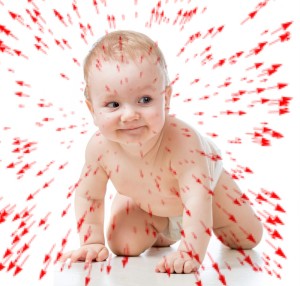
Researchers at the Department of Psychology have tested hundreds of babies over the past few years. They are now positive that the brain’s development, and development of motor skills and sensing go hand in hand, rather than independently. Photo: Department of Psychology, NTNU
Motor skills affect brain development
The results from the study aren’t that surprising, really. Babies at 11-12 months have learned to crawl or walk, and therefore have more experience with things moving towards them— or that they are moving towards something. Babies at 3-4 months are also in motion, but they aren’t moving themselves. They get moved around — in a carriage, a car, in their parents’ arms.
Research from the 1960s on kittens shows that motion that helps develop the visual system has to be self-induced. Being pushed around in a baby carriage doesn’t help.
“Young children who can’t crawl don’t really need to process motion carefully. But this becomes more important as the baby becomes more mobile,” Professor Audrey van der Meer explains.
She reminds us that it’s important to remember that whatever stimulus the baby is exposed to is what affects the brain’s development, and mentions research from England in the 1970s— a country that had enormous class differences at the time. Children from the working class had much better motor skills than upper-class children, who weren’t allowed to jump on the bed or climb on furniture.
“We’ve also seen that baby rats that grow up in an environment with tunnels and objects to hide behind and explore had more branches in their brain cells than those that grew up without these opportunities for physical development. So there is a direct link between brain development and the environment that the infant rat grows up in. There’s no reason to believe that it’s different for humans,” says van der Meer.
Testing premature babies
Researchers are also testing prematurely born babies in the same way as in this recent study. The research isn’t completed yet, but so far it looks like the premature babies still aren’t able distinguish between the three different types of motion at 11-12 months.
“This worries us. It could be that something happens in the structural development of the brains of babies who are born too early. In the last two to three months of pregnancy, the amount of folds in the brain increases dramatically, and early birth disturbs this process. So the volume of the brain may actually be less,” she explains.
Researchers are now testing children who were born prematurely again at age five, to see if they’ve caught up with children of the same age who were born at their due dates, and if the five-year-olds are able to distinguish between these three different types of motion.
Seth Bonsu Agyei, Magnus Holth, Frederikus van der Weel and Audrey van der Meer (2014): Longitudinal study of perception of structured optic flow and random visual motion in infants using high-density EEG. Developmental Science p. 1–16.
